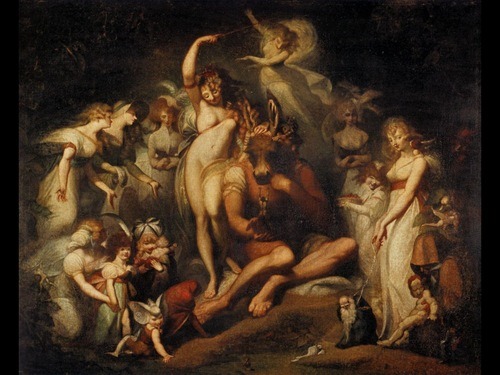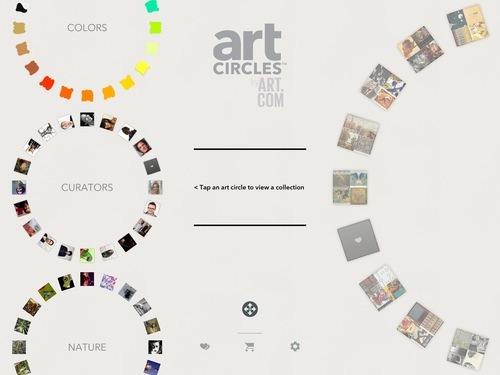
Sometimes, when people ask me how useful my iPad is (meaning: compared to a laptop), I’m at a bit of a loss. How do you measure the utility of taking a ten-minute break to dip into Fotopedia’s spread on the Alhambra or to glance at the Guardian’s photo of the day? Hours of reading and writing can leave even the most bookish person starved for images and color. The iPad is a relaxation and consumption device for me (the laptop = work), but it provides a refreshment of eye, mind and spirit that surely do me more good than a whole suite of productivity software. I use it to look at art.

Apps for looking at art abound. One of the best-known is Art Authority, a big barn of images, ranging from classical to modern works, fronted by a modest facade. What Art Authority lacks in sophistication, however, it makes up for in volume: the developers have pulled tens of thousands of images – including many high-resolution ones, for you retina screen users – from all over the web and served them up in a format designed to look like a museum.

Some users have complained that all of this stuff – from the images themselves to the Wikipedia pages that pop up when you touch the information button – is already available for free online. Art Authority is basically a big database of that material, which you can search using a limited range of fields: artist, title, location and “subject,” if, say, you really want to find paintings of horses. There’s no presiding curatorial sensibility, no narrative, no analysis. The developers have also produced a companion art-history book available for free in the iBook store. That consists of some very basic information about the various schools of Western visual art, but as with the large chronological categories in the app (Renaissance, Baroque, etc.), the framework is strictly for beginners. This app isn’t going to replace your Janson. Then again, you can find pictures in here that Janson didn’t have room to include.

And you can set Art Authority on shuffle, prop your iPad up and gaze at a seemingly endless stream of gorgeous images, quite a few of them in high resolution. You can pinch zoom to get a closer look, or try an interesting (if somewhat mysterious) tool that picks out “similar images” from the trove. At five bucks, the app’s seamless presentation is well worth the cost, although it would be great if – in addition to being able to save a list of favorite images – users themselves could add tags to aid future searchers. Technically, for example, it’s correct that the Pre-Raphaelites belong to the Romantic era, as does the Hudson School of landscape painters, but otherwise these two groups don’t have much in common. Yet you can’t currently search the database for either school.
You’d think, then, that I’d appreciate the more strictly curated artCircles app, which serves up images hand-selected by “the artists, musicians, designers and innovators of our time.” (I had heard of none of them.) You can look at all the images picked by a single curator while listening to an audio narration explaining his or her choices. There are also circles organized by dominant color or theme. The images include paintings, photographs, illustrations, even some vintage advertising.

Unfortunately, the wince-inducing narrations in artCircles are a reminder of just how hard it is not to sound self-indulgently dopey when talking about art. The selections in the app should have felt fresh and eclectic, full of new discoveries, yet there was something overly familiar about it – Klimt, Warhol, Dali, etc. – that made the experience strangely redolent of a dorm room. That’s probably because this free app is produced by the company art.com, which sells exactly the sort of posters you and your roommate and your best friend taped over your desks during freshman year. The app is actually a catalog designed to sell prints.

The Gagosian app is forthrightly a catalog, but one that’s so intricate and inventive that even a viewer who’s mostly indifferent to contemporary art (my favorite painter is Tintoretto, to give you a sense) can end up being charmed by it. Gagosian is a name to conjure with in the current art world, and even I recognize a few of the names (Damien Hirst, Richard Serra) in the three issues produced so far. While I liked playing around with Hirst’s colored-dots animation, the real fun lay in meandering through the works of artists who were entirely new to me, like Mike Kelley, who, alas, died earlier this year.

The Kelley “exhibit” presented by the app featured video, stills, quotes from critics, narration by the artist (which also confirmed that most people sound dopey when talking about art, including artists), and information and images concerning how his wacky, brainy installations were made. It helped that the project, “Exploded Fortress of Solitude,” offered a cockeyed version of Superman’s mountain sanctuary you could walk through. There’s also video in which bewigged men chain a groggy bride to a stone wall. I don’t know what it all means (despite Kelley’s efforts to explain it), but it sure was fun.

Even though I try to hit the major art museums in cities I visit, I’d probably never make it to exhibits at the various glittering Gagosian galleries scattered throughout the world. Not my scene. But the Gagosian app has earned a permanent spot on my tablet. Each issue has two or three things that purely delight me, presented in some sly way that invites exploration and play. How useful is that? Very.
–Laura Miller


